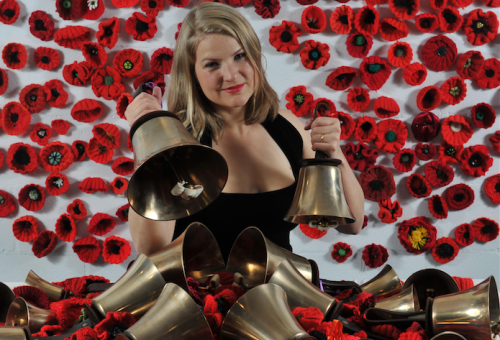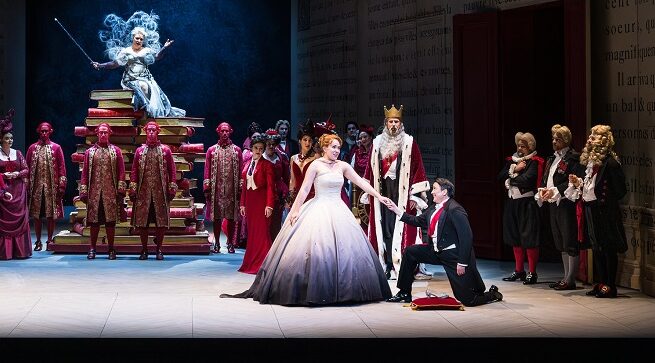
WHEN 62,000 bells toll as part of “The Diggers’ Requiem”, there will be a special meaning, for each bell signifies the life of one dead Australian soldier in World War I – 62,000 bells for 62,000 souls.
It’s an extraordinary idea for an extraordinary requiem.
Co-commissioned by the Australian Department of Veterans’ Affairs and the Australian War Memorial, it’s the brainchild of musical artist-in-residence at the memorial Christopher Latham and the culmination of his mighty “Flowers of War” project that has been commemorating the Great War in music for the past four years.
With an idea as bold as striking 62,000 bells, Latham was quick to engage Veronica Bailey, classical percussion teacher for the ANU Open School of Music and principal percussionist with the CSO, to make it happen. He praises her technical brilliance and has put her in charge of the entire percussion section of the newly-formed Australian War Memorial Orchestra.
Together with carillonist and lecturer at the School of Music, Thomas Laue, they’ve been working with the school’s rarely-used set of handbells that Latham calls “the Stradivarius of bells”, recording the substance of the bell part, although some will be played live.
A shorter version of “The Diggers’ Requiem” was performed in Amiens, France, just before Anzac Day, by Australian and European soloists, the French Orchestre de Picardie and the German Jenaer Philharmonie. Latham, a French-Australian, reports that the audience had “that stunned-mullet look.”
Latham never does things by halves and his requiem will be presented in the style of “Total Theatre”, complete with music and projected images of Australian soldiers’ iconic battles on the Western Front, including Fromelles, Pozières, Bapaume, Bullecourt, 3rd Ypres and Passchendaele, Villers-Bretonneux, Amiens, Péronne, Bellenglise and Montbrehain. In France, he tells “CityNews”, many people were shocked to see these images.
There are now two separate versions, one for brass suited to a military setting and the fully orchestrated version we’ll be hearing in Llewellyn Hall on October 6, set for trumpet, soprano, mezzo, accordion, bagpipes, piano, choir and orchestra.
“The Diggers’ Requiem” is the bookend to “The Gallipoli Symphony”, premiered by Latham and his artists in Istanbul in 2015 and later that year performed in the Queensland Performing Arts Centre.

Like the symphony, this requiem departs from convention in that it is the work of many composers. Latham has talked the assembled might of Australia’s composing talent – Nigel Westlake, Elena Kats-Chernin, Richard Mills, Graeme Koehne, Ross Edwards, Andrew Schultz and Latham himself – into writing movements.
As well, George Frideric Handel gets a look in with the “Dead March” from “Saul” and so does Australian composer FS Kelly, whose “Somme Lament” was written two weeks before his death in 1916.
While “The Gallipoli Symphony” was commissioned from scratch, Latham started with a huge advantage with the requiem, as the central movements were already in existence in the form of Nigel Westlake’s “The Glass Soldier Suite”. That tells the true story of Private Nelson Ferguson, blinded by mustard gas at Villers-Bretonneux, who returned to teach art in Victoria after the war, later receiving a corneal transplant and restored vision.
“The Diggers’ Requiem” is a formidable concept and a good deal of it is in Latham’s own head. Despite the appalling casualties, the blood, the mud and destruction on an industrial scale in the Great War, he sees light at the end.
Not content with one “Pie Jesu” (Merciful Jesus) written by Graeme Koehne, Latham plans to leave us looking as stunned as the townsfolk of Amiens, so he has written “Pie Jesu II”.
And who will sing that? We will.
“The Diggers’ Requiem”, Llewellyn Hall, ANU, 7.30pm, Saturday, October 6. Bookings to ticketek.com.au
Who can be trusted?
In a world of spin and confusion, there’s never been a more important time to support independent journalism in Canberra.
If you trust our work online and want to enforce the power of independent voices, I invite you to make a small contribution.
Every dollar of support is invested back into our journalism to help keep citynews.com.au strong and free.
Thank you,
Ian Meikle, editor




Leave a Reply